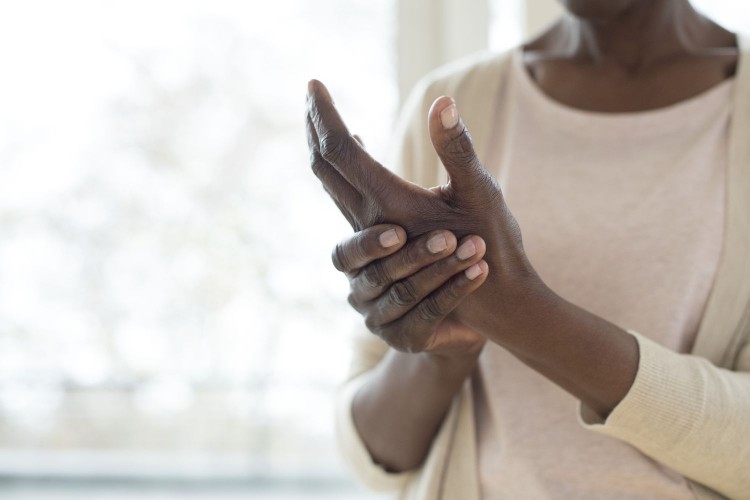
- Researchers are reporting that Black adults are more likely to experience a stroke and at a younger age than their white counterparts.
- Despite the overall number of strokes declining over a 22-year period, Black Americans still face a higher risk.
- Experts say racial inequity in healthcare remains a serious issue in the United States.
Black adults in the United States are more likely to experience a stroke than their white counterparts, according to a new study published in the journal Neurology.
The researchers reported that between 1993 and 2015, the number of strokes decreased in the United States.
However, during that same period, researchers noted that although stroke incidences decreased for Black adults, their overall risk of stroke compared to white adults remained about the same.
The researchers said inequities in healthcare remain widespread with certain racial and ethnic groups bearing a much larger proportion of the burden.
Persistent risk of stroke for Black adults
Researchers separated outcomes to see how different forms of stroke affected the Black population, white population, and combined population. Stroke diagnoses included
For the combined population, the number of strokes of any kind per 100,000 people dropped from 230 in 1993 to 188 in 2015. Although the number of strokes within the Black population also declined during that same period, the number of strokes was still higher (349 in 1993 compared to 311 in 2015) than in both the white population (215 in 1993 compared to 170 in 2015) and the combined population.
Furthermore, researchers found that the relative risk of having a stroke between the Black and white populations didn’t decrease at all during that time. During the 22-year-period of the study, Black adults had between 50% and 80% more incidences of stroke compared to white adults.
“The number of first-ever strokes has decreased over this 22-year period, but what unfortunately we also found was that there’s an inequity in the number of strokes between the two groups between Black and white adults. And in all of the study periods that we examined, Black adults had a higher rate of stroke. This inequity did not get better over time,” Dr. Tracy Madsen, an emergency medicine physician at Rhode Island Hospital, an associate professor of emergency medicine and epidemiology at Brown University, and author of the research, told Medical News Today.
“While overall stroke incidence has decreased among both Black and white adults over time, a true success, significant disparities persist over time, with Black adults having a 1.83 fold higher stroke incidence as compared to white adults,” added Dr. Rachelle Dugue, a clinical assistant professor of neurology and neurological sciences at Stanford Medicine in California who wasn’t involved in the study.
Findings on age, risk factors, and stroke
The research also yielded additional information about stroke incidences, age, and other risk factors.
Hypertension, diabetes, and smoking are all
In addition, the average age for when an individual experienced their first stroke dropped in both populations. That means people are having strokes at a younger age today than they were in the 1990s.
The average age of a first-time stroke decreased from 66 to 62 in Black people and from 72 to 71 in white people.
“Overall, these findings highlight the need for active preventative measures of stroke risk factors at earlier ages (e.g. campaigns promoting cardiovascular exercise; earlier blood pressure screening and treatment, earlier detection and mitigation of social determinants of health,” Dugue told Medical News Today.
Black individuals between the ages of 20 and 54 also had the highest risk of stroke compared to white individuals of the same age.
“The inequities that are highest between 20 and 54 are especially concerning because, as you can imagine, if someone has strokes at 30 or 40 or 50 that has a major impact on the rest of their life in terms of disability and, potentially, inability to care for themselves,” said Madsen.
Solutions for stroke risk at every level
Addressing inequities in healthcare is no easy feat.
In their research, Madsen and her team cite “systemic racism in the healthcare system” and “inequities in access to care” among myriad reasons for the gap between stroke incidences among Black and white adults in the study.
But, they said there’s a way forward too.
“There are practical solutions really at multiple levels,” noted Madsen.
Among them, she cites initiatives such as bringing greater resources and access to knowledge and care at the community level. At the federal level, changing these outcomes means policies such as making insurance coverage more accessible to Black adults and addressing costs to see primary care doctors and accessing vital medication.
“We need resources so that people of any race or ethnicity or any poverty level can go and access preventive care and medications for blood pressure or medications for diabetes,” said Madsen. “We need more work to figure out where there are other solutions we haven’t identified and what are the individual barriers for patients to get medications and see their doctor.”
In 2023, the American Heart Association issued a scientific statement on
“Healthcare providers and lawmakers can work toward health equity by tailoring policies and public health initiatives to ensure all individuals have access to the highest level of health opportunity. Individual healthcare providers can incorporate routine social determinant of health screening into the patient encounter to deliberately identify and subsequently mitigate adverse social determinants of health through social-needs targeted care,” said Dugue.








